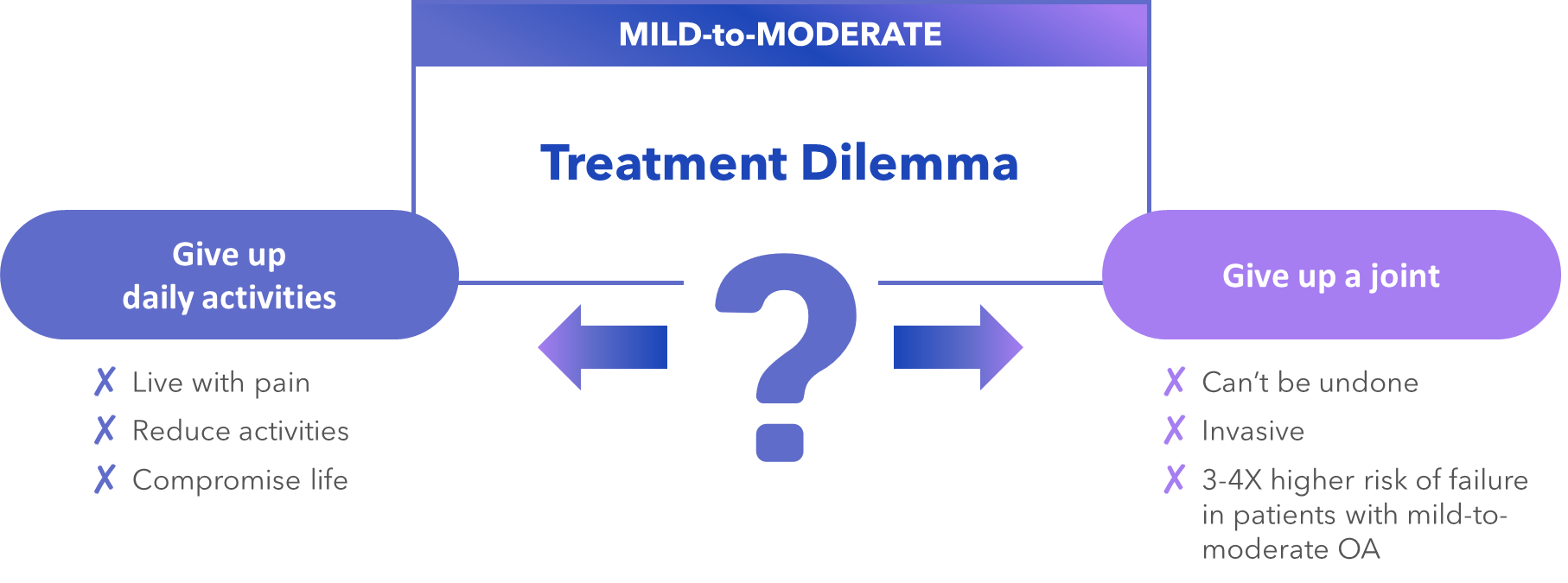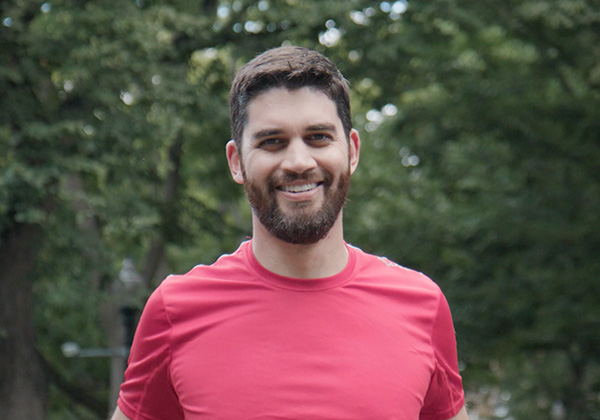
KNEE OSTEOARTHRITIS
Mild to moderate knee osteoarthritis (OA) can be as painful as severe OA.
Knee OA develops when the cartilage at the end of your bones wears down causing pain during movement. Reducing the amount of weight supported by the knee is a proven method for reducing OA pain.1-5
1. Andriacchi, et al. J Rehab Res Dev. 2000; 37(2): 163-170. 2. Messier, et al. Arth Rheum 2005; 52(7): 2026-2032. 3. Gunther, et al. Best Practice Res Clin Rheum. 2004; 15(4): 627-43. 4. Sharma, et al. JAMA 2001; 286(2): 188-195. 5. Gomoll et al. Knee Surg Sports Traumatol Arthrosc. 2016. DOI 10.10007/s00167-016-4123-0.
Knee OA Steals Prime Years of Your Life
OA is very common, and more than half of the people with knee OA are of working age.
Over 18 million people in the U.S. suffer from symptomatic knee OA.
Over 50% of Americans with knee OA are under 65 years old.
Moximed estimates and data from Arthritis by the Numbers, Arthritis Foundation.
Bridging the Treatment Gap

People with knee OA usually start with non-surgical treatments, like knee injections, physical therapy, or off-loader braces. Non-surgical treatments improve or alleviate symptoms for many, but some people still need more relief. Eventually, many patients are faced with a treatment dilemma: Give up their daily activities and live a compromised lifestyle or give up their joint.

People with mild or moderate knee OA can have as much, or more, pain than people with end-stage knee OA.
SYMPTOMS & CRITERIA

